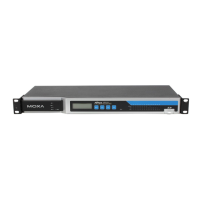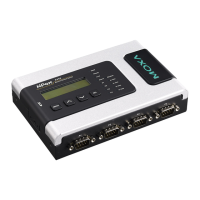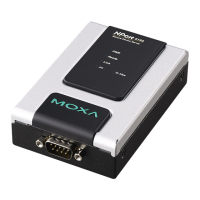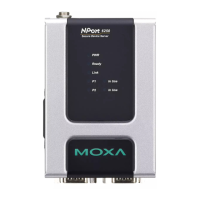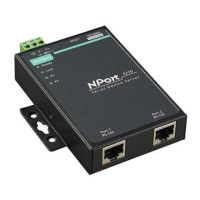NPort 6000 Series Introducing Serial Port Operation Modes
Socket Applications
For socket applications, the NPort 6000 offers the following modes: TCP Server/Secure TCP Server, TCP Client/
Secure TCP Client, and UDP.
TCP Server and Secure TCP Server Modes
In TCP Server mode, the serial port on the NPort 6000 is assigned a port number which must not conflict with
any other serial port on the NPort 6000. The host computer initiates contact with the NPort 6000, establishes
the connection, and receives data from the serial device. This operation mode also supports up to eight
simultaneous connections, enabling multiple hosts to collect data from the same serial device at the same time.
As illustrated in the figure, data transmission proceeds as follows:
1. The host requests a connection from the NPort 6000, which is configured for TCP Server mode.
2. Once the connection is established, data can be transmitted in both directions between the host and the
NPort 6000.
TCP Server mode supports optional data encryption using SSL.
TCP Client and Secure TCP Client Modes
In TCP Client mode, the NPort 6000 can actively establish a TCP connection to a pre-defined host computer
when serial data arrives. After the data has been transferred, the NPort 6000 can automatically disconnect
from the host computer by using the Inactivity time settings.
As illustrated in the figure, data transmission proceeds as follows:
1. The NPort 6000, configured for TCP Client mode, requests a connection from the host.
2. Once the connection is established, data can be transmitted in both directions between the host and the
NPort 6000.
TCP Client mode includes optional data encryption using SSL.
